
How Ice Cream Shops Are Incorporating Cultural Influences Into Creative Flavors
- 1. Cultural Influences on Ice Cream Flavors
- 2. Popular Cultural Flavors in Ice Cream
- 3. How Ice Cream Shops Use Cultural Flavors to Stand Out
- 4. Examples of Ice Cream Shops Incorporating Cultural Flavors
In recent years, ice cream shops have begun embracing the rich tapestry of global flavors, incorporating cultural influences into their offerings. From sweet treats inspired by traditional desserts to bold, exotic ingredients, cultural influences are pushing the boundaries of what ice cream can be. The fusion of global ingredients with classic ice cream recipes not only enhances flavor diversity but also introduces customers to new tastes, creating a more dynamic and international dessert experience. As food culture continues to evolve, more and more ice cream shops are seeking inspiration from around the world to create innovative and delicious flavors that reflect the cultural diversity of today’s globalized world.
Ice cream makers are experimenting with a wide variety of cultural flavors, introducing ingredients and recipes from every corner of the globe. Some of the most popular influences include Asian flavors like matcha (green tea), red bean, and yuzu, which bring a refreshing, unique twist to traditional ice cream. Latin American flavors such as dulce de leche and cajeta (goat's milk caramel) provide a rich, sweet base. Middle Eastern flavors like pistachio, rosewater, and tahini offer a savory yet sweet balance that is becoming increasingly popular in ice cream shops. Additionally, traditional European flavors such as tiramisu, stracciatella, and baklava are finding their way into ice cream menus, allowing customers to enjoy the taste of their favorite cultural desserts in frozen form. These global flavors give ice cream lovers the chance to explore new profiles and textures in a familiar, beloved form.
By incorporating cultural flavors, ice cream shops are not only elevating their menu but also differentiating themselves from the competition. Offering exotic, globally inspired flavors creates a unique selling point that can attract customers looking for something new and exciting. Ice cream shops are using these flavors to create signature concoctions, limited-time offerings, and even seasonal menus that celebrate specific cultural holidays or events. Some shops also infuse these cultural flavors with local ingredients, merging the best of both worlds for an unforgettable treat. For example, some ice cream shops might offer matcha-flavored ice cream made with organic, locally sourced green tea, giving it an extra touch of authenticity. The combination of global and local ingredients allows these ice cream shops to offer an authentic experience while also supporting regional producers.
Across the U.S., numerous ice cream shops are leading the way in incorporating cultural influences into their creations. Molly Moon's Ice Cream in Seattle is a prime example, featuring unique flavors like honey lavender, toasted coconut, and a seasonal rose cardamom that draws from Middle Eastern spices. Salt & Straw, with locations in Portland, Oregon, and Los Angeles, is known for its adventurous takes on cultural flavors, such as the "Sesame & Honey" flavor, which combines traditional Middle Eastern ingredients with a modern twist. Little Damage in Los Angeles also integrates cultural influences into their ice cream offerings with their "Black Coconut Ash" flavor, a nod to Southeast Asian-inspired flavors, paired with the classic sweet cream base. These ice cream shops are redefining the dessert landscape, offering exciting new flavors that pay homage to cultures around the world while appealing to the American palate.




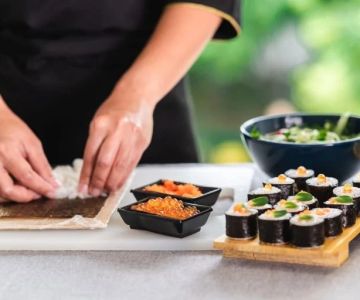
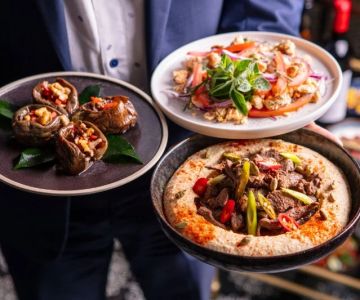

 IHOP3.0 (470 reviews)
IHOP3.0 (470 reviews)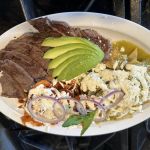 Al Chile4.0 (87 reviews)
Al Chile4.0 (87 reviews) Vive La Crepe4.0 (28 reviews)
Vive La Crepe4.0 (28 reviews)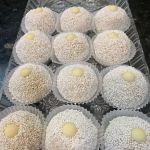 International Cafe & BBQ4.0 (276 reviews)
International Cafe & BBQ4.0 (276 reviews) Supreme pizza NY3.0 (23 reviews)
Supreme pizza NY3.0 (23 reviews)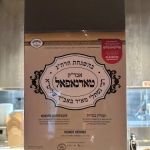 Munch Heimish4.0 (241 reviews)
Munch Heimish4.0 (241 reviews)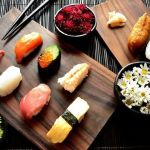 Best Sushi Restaurants for Every Budget and Taste: A Complete Guide
Best Sushi Restaurants for Every Budget and Taste: A Complete Guide The Appeal of French Restaurants for Special Occasions
The Appeal of French Restaurants for Special Occasions Exploring Vegan Restaurants That Focus on International Flavors
Exploring Vegan Restaurants That Focus on International Flavors How Pizza Restaurants Are Attracting Customers With Limited Edition Offerings
How Pizza Restaurants Are Attracting Customers With Limited Edition Offerings How Wine Bars Are Organizing Pairing Nights for Enthusiasts
How Wine Bars Are Organizing Pairing Nights for Enthusiasts How Juice Shops Are Integrating Superfoods Into Daily Menus
How Juice Shops Are Integrating Superfoods Into Daily Menus